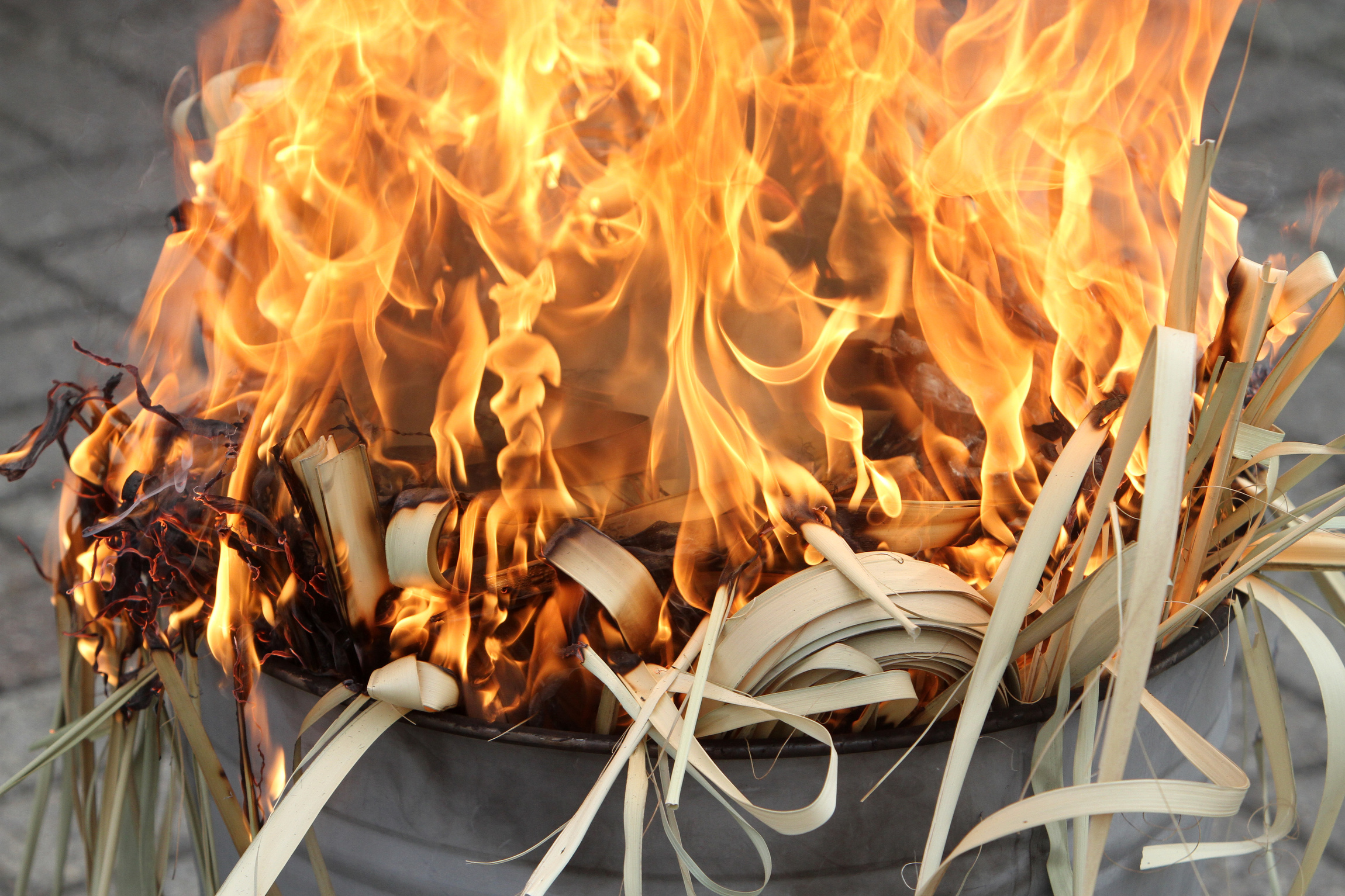Each year around this time many thousands of the Catholic faithful in the Diocese of Orange take time out of their Wednesday to go to their local parish church and participate in an observance that has its roots in Old Testament times and its first “modern” manifestation nearly 1,300 years ago—the imposition of ashes.
Ash Wednesday, the traditional beginning of the 40 days of Lent, provides for one of the Church’s most visible outward signs of faith when the priest or designated minister dips into a small vessel containing fine, velvety palm leaf ash and inscribes a cross on the foreheads of the congregation.
Most observant Catholics know that the ashes represent mortality and penance—a reminder that our earthly lives are finite and that Lent is a season of sorrow for sins and consequent repentance. And that sooty, deep black cross on the forehead serves as a symbol of this to the world beyond the church walls.
Most observant Catholics also know that the ashes come from the burned palm leaves from the previous year’s Palm Sunday observances. But it’s a good bet that they give little thought to the process. How exactly do the ashes make the transition from the palm tree to the vessel in the priest’s hand? Does each parish yank several fronds off the palm trees in the back yard, hoard the leaves for an entire year, have a small-scale bonfire sometime after Christmas, collect the ashes and then spend even more time grinding the ashes down to the powdery consistency necessary to produce hundreds of vivid black crosses on so many foreheads?
The answer, in most every case is, they don’t.
“Some people try to burn their own, but a lot of times it’s just not worth the trouble,” says Mike Cotter, the president of Cotter Church Supplies, which operates a chain of five retail locations throughout California. “It’s not as simple as just burning the leaves and putting the ashes on people’s foreheads. You really need to grind it down to a powder, otherwise it’s kind of grainy and you get lots of chunks of residue and it won’t adhere to a person’s forehead so well and you get crumbles falling down over their nose and everywhere.”
Most churches, says Cotter, opt to buy their ashes instead. Cotter’s, and other retailers throughout the country, sell them in sealed plastic bags, and a little goes a long way: Cotter’s sells a bag of ashes intended to anoint the foreheads of 1,000 people for $13.75.
Cotter’s and other retailers don’t produce the ashes, however. “I can think of only two places that offer them,” says Cotter. One, he says, is located in Minnesota. The supplier for Cotter’s is located in Texas, but declined to discuss the business, citing company policy.
Cotter’s begins promoting their ashes for sale “around the first of the year,” says Mike Cotter, “and people buy them depending on when Ash Wednesday falls. They’re non-perishable, so we have a good supply and we can accommodate people who call up to the last minute.”
Palm leaves for Palm Sunday are a different matter, however. Suppliers deliver fresh leaves in refrigerated trucks, says Cotter, “and we kind of have to hit the bull’s eye on delivery so the parishes get them right on time for Palm Sunday.”

